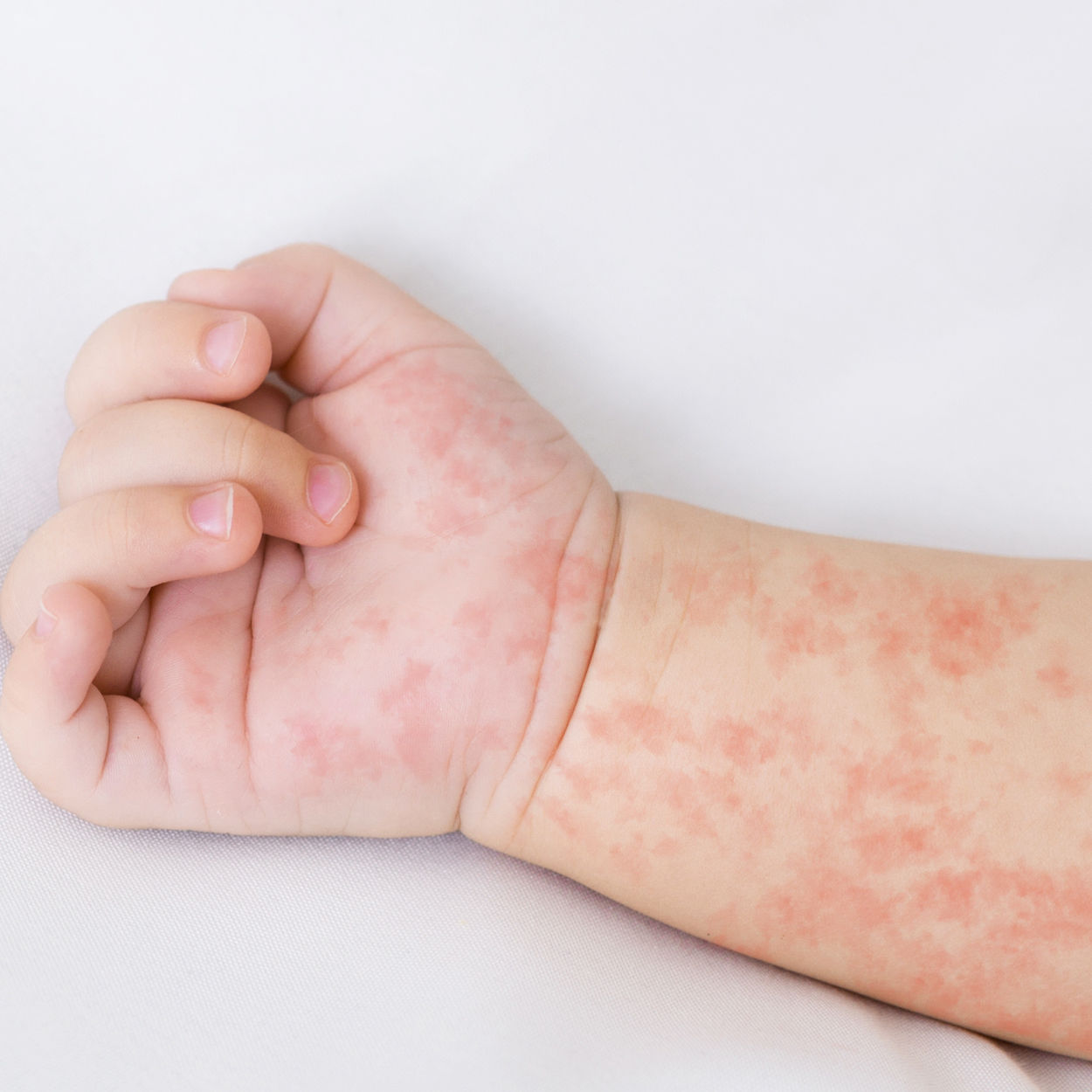Although lactose intolerance and Cow’s Milk Allergy (CMA) can sometimes present with similar symptoms, their actual causes are very different. Unfortunately, terminologies such as ‘milk allergy’, ‘milk intolerance’, and ‘lactose intolerance’ are often used interchangeably without a clear understanding of the different mechanisms underlying them. By understanding the differences between food intolerance and allergy and being aware of specific symptoms of the different conditions, healthcare professionals can be better prepared to diagnose and treat these conditions more accurately.
Intolerance versus allergy
Food intolerance and allergy are both examples of ‘food hypersensitivity’ but they differ in the type of reaction triggered by the body.
Food allergy:
- This occurs when the body immune system demonstrates an abnormal response to the proteins in food.
- Broadly classified into those that are IgE mediated, and those that are non-IgE mediated
Food intolerance:
- Does not involve food proteins and is a non-immune mediated reaction.
- Can be caused by either an absence of an enzyme needed to fully digest a food or a pharmacological reaction where the body reacts to certain naturally occurring substances in foods such as vasoactive amines, salicylates, caffeine and alcohol.
What is lactose intolerance and what causes it?
Lactose intolerance is where there is reduced capacity to digest lactose, a sugar naturally found in all mammalian milk due to an absence or deficiency of the enzyme lactase in the small intestine.
Malabsorption, therefore, occurs when lactose passes through the intestines without being absorbed, acting as a bacterial substrate in the colon which fuels gastrointestinal symptoms such as:
- Diarrhoea
- Flatulence
- Nausea
- Gut distension
- Abdominal pain
The degree of gastrointestinal symptoms is dependent on the amount of lactose ingested and levels of lactase present in the small intestine1.
Type of lactose intolerance:
Congenital lactose intolerance
- This is extremely rare, presenting typically in isolated population groups such as Finn’s and Russians2 and is evident from birth.
Primary lactose tolerance
- Associated with the natural decline of lactase enzyme levels. It typically occurs around 3 years of age although symptoms may not become apparent until after 5 years of age1.
- This process occurs at varying degrees between different populations with East and South-East Asia, tropical Africa and Native Americans and Australians more likely to suffer with lactose malabsorption3.
Secondary (or Transient) lactose intolerance
- Occurs secondary to mucosal damage affecting the production of lactase.
- It is most often following severe gastroenteritis but also in conditions such as coeliac disease and CMA when the epithelium is damaged1.
- It is usually transient and tolerance to lactose improves again once the epithelial lining has repaired.
What is Cow’s Milk Allergy?
CMA, also known as Cow’s Milk Protein Allergy (CMPA), is an immunologic hypersensitivity to one or more of the proteins found in milk. This allergy is particularly prominent in infants and young children4 5. Typically, it presents in early infancy soon after initial exposure to cow’s milk protein in formula or weaning solids but also in a lower incidence of exclusively breastfed infants6. The prognosis is good with up to 75% of children outgrowing a milk allergy7.
Causes of Cow’s Milk Allergy
CMA can present as a broad range of symptoms involving many organ systems depending on the type of immune reaction causing the allergic response. Discriminating between the type of reaction is important as can affect risk status of developing other food allergies and atopic disease8.
There are two main types of CMA:
- An IgE-mediated (immediate) allergy involving IgE Antibodies. Symptoms start within minutes to 2 hours after allergen ingestion. Symptoms might include urticaria, swollen eyes, lips, breathing difficulties, anaphylaxis, abdominal pain and vomiting9.
- A Non-IgE-mediated (delayed) allergy which are generally T cell-mediated. Symptoms typically occur after 2 hours up to 48 hours from ingestion. These may include gastrointestinal symptoms such as reflux, diarrhoea, cramps, constipation or cause eczema and respiratory symptoms9. Non-IgE CMA can often be dose dependant10 and is perhaps more likely to be misdiagnosed as intolerance due to overlapping gastrointestinal symptoms.
Differences and similarities between lactose intolerance and Cow’s Milk Allergy
It can sometimes be difficult to differentiate between CMA and lactose intolerance, as some digestive symptoms overlap such as nausea, abdominal pain, and diarrhoea. However, there are some distinct differences to be aware of that can help inform diagnosis and, therefore, ensure correct management.
| Lactose Intolerance | CMA | |
| Presenting symptoms |
|
|
| Mechanism |
|
|
| Age / point of onset |
|
|
|
|
|
| Dietary management |
|
|
- Lomer MC, et al. Review article: lactose intolerance in clinical practice--myths and realities. Aliment Pharmacol Ther. 2008; 15;27(2):93-103.
- Büller HA, et al. Clinical aspects of lactose intolerance in children and adults. Scand J Gastroenterol Suppl. 1991; 188:73-80.
- Storhaug CL, et al. Country, regional, and global estimates for lactose malabsorption in adults: a systematic review and meta-analysis. Lancet Gastroenterol Hepatol. 2017, 2(10):738-746.
- Gupta RS, et al. The prevalence, severity, and distribution of childhood food allergy in the United States. Pediatrics. 2011; 128(1):e9-17.
- Venter C, et al. Prevalence and cumulative incidence of food hyper-sensitivity in the first 10 years of life. Pediatr Allergy Immunol. 2016;27(5):452-8.
- Host A, et al A prospective study of cow’s milk allergy in exclusively breast-fed infants. Incidence, pathogenetic role of early inadvertent exposure to cow’s milk formula, and characterization of bovine milk protein in human milk. Acta Paediatr Scand. 1988;77(5):663-70.
- Flom JD, et al. Epidemiology of Cow's Milk Allergy. Nutrients. 2019 May 10;11(5):1051.
- Saarinen KM, et al. Clinical course and prognosis of cow's milk allergy are dependent on milk-specific IgE status, Journal of Allergy and Clinical Immunology. 2005; 116 (4) 869-875.
- Walsh J, et al. Differentiating milk allergy (IgE and non-IgE mediated) from lactose intolerance: understanding the underlying mechanisms and presentations. Br J Gen Pract. 2016 Aug;66(649):e609-11.
- Labrosse R, et al. Non-IgE-Mediated Gastrointestinal Food Allergies in Children: An Update. Nutrients. 2020 Jul 14;12(7):2086.
Help us provide information most relevant to you
Please ensure your role and areas of interest are up to date.





